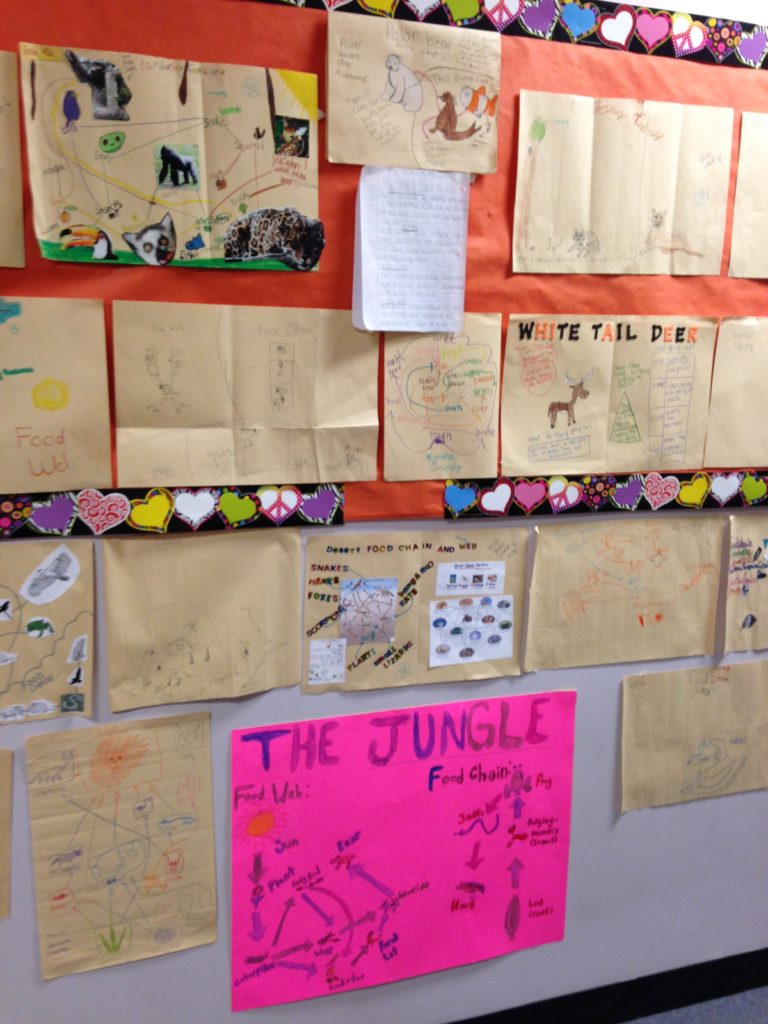Engage
- Ask students what they need in order to be healthy. Ask: What do you think a tree or forest needs to be healthy? Direct them to work in pairs or teams to brainstorm all the components they think would be necessary for a healthy forest. Invite them to share their ideas with the rest of the class.
Explore
- Have each student select a forest organism to study. (See Getting Ready in the Overview for possibilities.) Make sure the students select a variety of plants and animals, including mammals, insects, birds, reptiles, trees, and other plants.
- Give students copies of the Food Web Research student page to help guide their research, making sure they understand what they need to find out about their organism. In addition to the information, students will also need to find or draw a picture of their organism. See Web of Life – Additional Resources in the Tools tab for suggested websites to begin their research.
- After students have completed their research, have them make a nametag for their forest plant or animal on an index card, including its name and picture.
Explain
- Have students sit on the floor in a circle, placing their nametags in front of them. Remind students of the food web concept (see Background). Ask students how they could model this process in an ecosystem using their nametags and string.
- Starting with one “plant,” ask that student to hold the end of a ball of string and to name another organism in the circle that eats the plant. Pass the ball to this second student. Ask the second student to name another organism that eats or is eaten by his or her organism. This process will continue until each “organism” is linked to the ecosystem, and the ball is returned to the first student. Point out that the web shows all the ways that energy is transferred between organisms in an ecosystem. Discuss students’ observations, such as: What do you notice about your organism and all the other organisms? How are the organisms in an ecosystem connected to each other?
- Have students slide back until the string is taut. Explain that students should keep still, but if they feel a tug, they should tug in response. When everyone is still, tell the student holding the original end of the string to gently begin tugging. Keep reminding everyone that if they feel a tug, they should tug in response. Through this mechanism, vibration will spread through the food web until everyone is tugging and the whole web is shaking.

Students are learning about the interactions of different creatures in their modeled food web.
Photo credit: Rose Banzhaf
- Randomly select one of the organisms to drop out of the web, drawing the name from a hat or using another method. Ask if any other organisms should drop out because they eat or are eaten by that organism. After one or more have dropped out, randomly choose another organism and repeat the procedure. Continue playing for a few more rounds; then ask the following questions:
- What happens when we remove a plant or animal from the forest ecosystem? (Organisms that depend on it are affected. The web itself changes shape.)
- Is the change more dramatic when there are more plants or animals or when there are fewer? (Fewer.)
- What do you think would happen if we add people to the web?
- What does this model tell us about what might happen in a real forest?
- In what ways is this model like a real forest food web? In what ways is it different?
- Ask students how the food web model might illustrate what happens when one of the links in an ecosystem is harmed through natural or human causes. (The rest of the ecosystem feels the effects.)
Elaborate
- Have students select one of the plants or animals from the activity, and write a story about the food web on which it depends.
- Help students create a mural showing the forest “web of life.” Have them draw hills, valleys, streams, and other features on sheets of cardboard or poster paper and then add photos or drawings of the organisms they studied in the activity. By placing a push pin next to each plant or animal, they can use yarn to connect organisms to other animals and plants that eat or are eaten by them.





